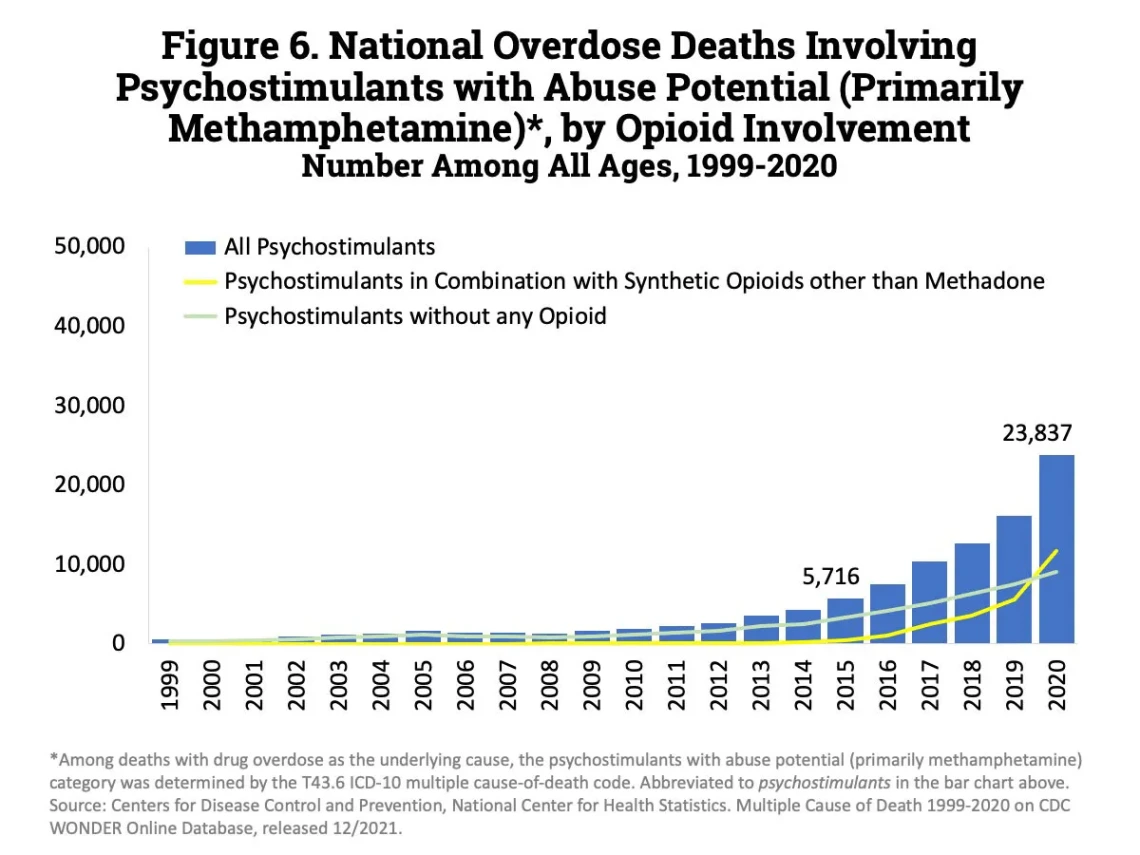Federal Grants Will Fund Rural Treatment Centers to Address Psychostimulant Overdoses
New federal funding will help rural communities deal with the latest drugs causing overdose deaths – psychostimulants like methamphetamine, cocaine, and ecstasy.

According to the U.S. Department of Health and Human Services (HHS) $15 million in funding will be made available to rural communities to combat psychostimulant misuse and related overdose deaths.
An element of the HHS Overdose Prevention Strategy, the grants are part of more than $400 million for the Rural Communities Opioid Response Program (RCORP) initiative that aims to reduce deaths and overdoses due to substance use disorder in higher-risk rural communities.
And the funding, HRSA Administrator Carole Johnson said, would go directly into rural communities.
“The Biden Administration has made significant investments in substance use disorder, prevention, treatment, and recovery,” Thompson said in an interview with the Daily Yonder.
“But what’s different here is that we’re really targeting rural communities that need the money most. Sometimes what you see is when awards are made at the state level, or at the regional level, money may not always make it to rural communities.”
According to the Health Resources Services Administration (HRSA), drug overdose deaths involving psychostimulants, including methamphetamine and cocaine, as well as prescription drugs to treat ADHD and depression, rose from 547 in 1999 to 23,837 in 2020, a more than 4,000% increase.
Drug overdose deaths have substantially increased since the beginning of the Covid-19 pandemic, officials said, and the rate of overdose deaths associated with psychostimulants, in general, is higher in rural areas than in urban areas, Thompson said.
“What we’re increasingly seeing is overdose deaths from synthetic illicit opioids, like Fentanyl,” she said. “The thing that we’re concerned about as well is when stimulants like methamphetamine are laced with fentanyl. Really, we’re thinking about the fact that it’s not a discreet market and that there’s a lot of blending here. We want to make sure that communities have the tools that they need, and we built this program… because communities told us this is what they were seeing, and what they felt like they didn’t have as much capacity to address.”
HRSA said that cocaine and psychostimulant-involved overdose deaths disproportionately affect racial and ethnic minority populations such as Black and American Indian/Alaska Native populations.
In May, the White House released a plan to tackle psychostimulants and their impact on public health and safety.
“While we work to stop the devastation caused by fentanyl, we cannot and will not lose sight of the role psychostimulants are playing in the nation’s substance use crisis,” Johnson said. “Our investment will help rural communities across the country expand access to substance use treatment for psychostimulant misuse and open pathways to recovery.”
The $500,000 grants were awarded to 29 clinics across the country, like St. Luke’s Miners Memorial Hospital, in Coaldale, Pennsylvania, and Mariposa Community Health Center in Nogales, Arizona.
Awardees could be located in either rural or urban areas, but according to HRSA’s guidelines the applicant organizations must “ensure that local control for the award is vested in the targeted rural communities.” Additionally, all service delivery sites where clinical and social services are provided must be exclusively located in an HRSA-designated rural area as defined by HRSA’s Rural Health Grants Eligibility Analyzer.
The $15 million investment will join another $55 million in funding from the Substance Abuse and Mental Health Services Administration (SAMHSA) for its Tribal Opioid Response (TOR) addressing the overdose crisis in tribal communities.
Source: https://dailyyonder.com/federal-grants-will-fund-rural-treatment-center…

